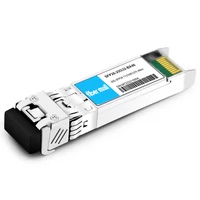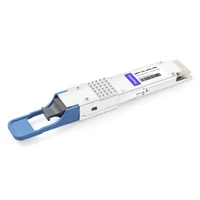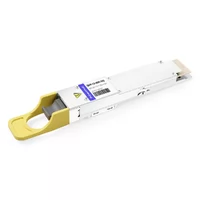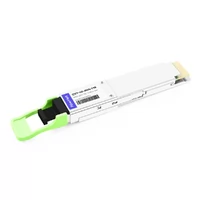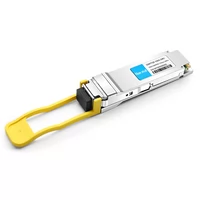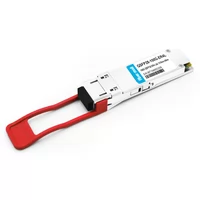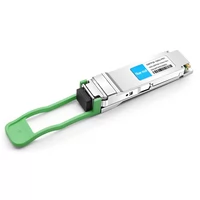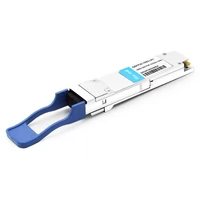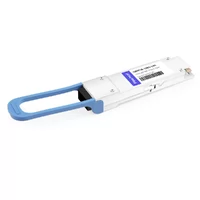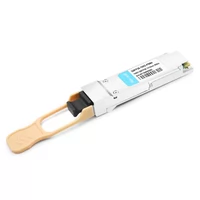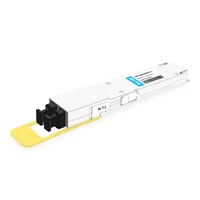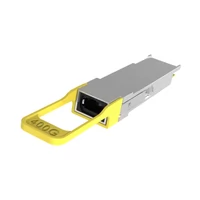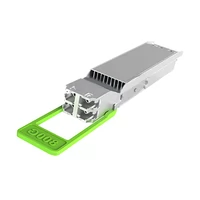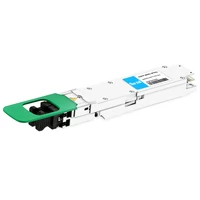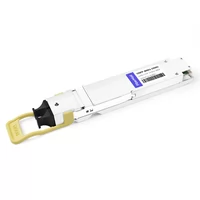The technology of optical fibers is critical in modern telecommunications because it allows data to be sent at high speeds over long distances. Among the different kinds of optical fibers, the 1310nm wavelength has some unique features and uses. This frequency is known for having very little dispersion, which makes it perfect for medium-range communication like that found in cities or between them. This article will talk about what wavelengths are and how they work but, more specifically, concentrate on what makes 1310 nm fibers special. People who read should know about technicality, practicality, and recent developments in this area, thus determining why 1310 nanometer wavelength is key to fiber optics today.
Table of Contents
ToggleWhat is 1310nm Fiber and Why Is It Important?
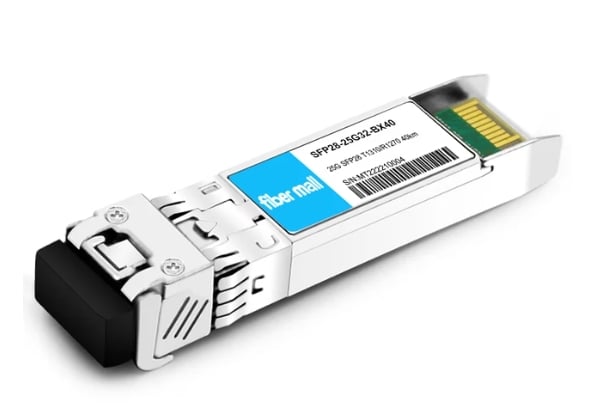
What makes 1310nm fiber unique among other fiber types?
The 1310 nm fiber is unique because of its low dispersion and attenuation properties. At this wavelength, chromatic dispersion is almost nonexistent, enabling signals to travel in fiber optic communication systems with lesser distortions over more extended distances. Besides, 1310nm fiber has a higher rate of loss compared to other wavelengths, thus reducing the quantity of energy lost as it moves through the medium. These qualities make it ideal for use in metropolitan and regional networks where signal clarity over long-range matters most. Also, its efficiency in handling large bandwidth data transfers without much degradation in performance makes it different from any other type used for telecommunications purposes.
How do 1310nm and 1550nm wavelengths compare?
Essential to fiber optic communication are the 1310nm and 1550nm wavelengths, which have different benefits compared to other fiber wavelengths. It has less chromatic dispersion than any other wavelength, making it best suited for transmitting signals over medium distances with minimum signal degradation. Unlike the first option, this one has a lower attenuation level, allowing signals to be transmitted over long distances without much loss in power. Additionally, EDFAs (Erbium-Doped Fiber Amplifiers) can be used with it so as to extend the transmission distance without regeneration of signals. On metropolitan and regional networks, people usually use 1310 nm, while 1550nm is chosen for long-haul or submarine communications systems because they work better over extended ranges.
Why is 1310nm commonly used in fiber optic networks?
It is often used in fiber optic networks because of its favorable optical characteristics. Being less dispersive than other wavelengths, it reduces signal deterioration over moderate distances. Moreover, this wavelength suffers from lower attenuation, thus shedding a small amount of power during transmission. Thus, it is more suitable for metropolitan and regional networks that require reliability and clarity. Such properties allow fast transmission of large amounts of data over long distances, thereby improving the performance of the entire system without compromising quality.
How Does 1310nm Fiber Work?
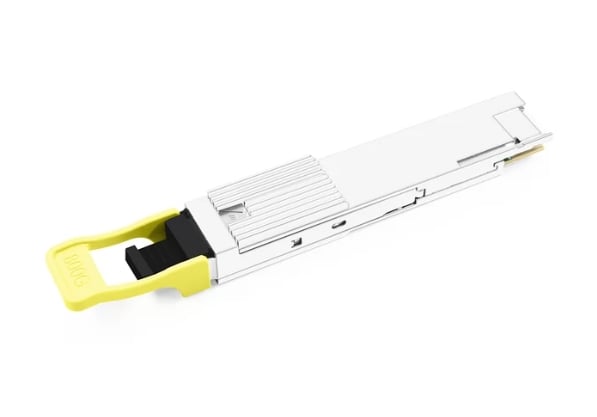
What is the principle behind 1310nm wavelength transmission?
Due to its beneficial optical attributes, the 1310nm wavelength transmission principle in fiber optic networks involves light propagation through the optical fiber using this particular wavelength. At 1310nm, there is the least chromatic dispersion of light, which prevents the wide spreading of light pulses over long distances, thus keeping the signal clear and intact. Also, it has a low attenuation; hence, less power is lost as the signal passes through the fiber. Such features are attained by the interaction between materials that make up an optical fiber with light having a wavelength of 1310 nm, only allowing for effective and reliable data transmission, so much so that it can be applied best for metropolitan area networks (MANs) or regional nets.
How does attenuation affect 1310nm fiber?
Attenuation in 1310nm fiber optic cables is the term used to refer to signal loss as light travels through them. However, despite having lower attenuation than other wavelengths, several factors still contribute to this signal loss, including impurities on fiber materials themselves, bends along their path, and external conditions around these cables. Absorption and scattering are two leading causes of weakening signals in such a media. Manufacturers try their best by using good quality materials coupled with improved production methods so that they can curb this problem. Still, it will always be there because some physical properties that necessitate either repeaters or amplifiers when networking over long distances have to be established to maintain integrity between different points.
What role does dispersion play in 1310nm fiber optics?
Dispersion in fiber optics at 1310 nm mostly means chromatic dispersion. This is when light pulses stretch over time while going through a cable. Chromatic dispersion is quite low at the 1310-nanometer wavelength compared to other wavelengths, making it possible to transmit data quickly over relatively short distances without losing much of the signal’s quality. With lower dispersion, pulses do not widen so much, enabling them to maintain their distinctiveness and carry more information simultaneously over one line. Therefore, fiber-optic cables with this property are often used in local networks that cover large cities or regions – they help keep data intact across medium distances.
Differences Between Single-Mode and Multi-Mode 1310nm Fiber
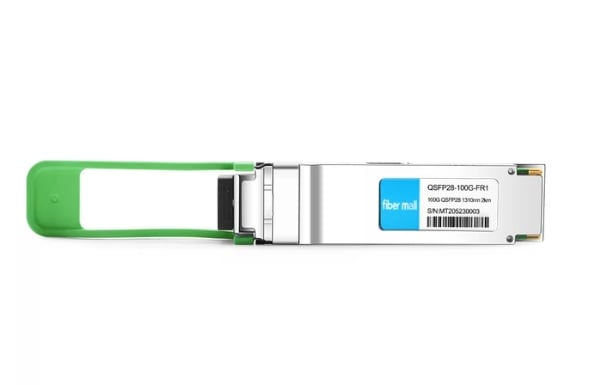
What distinguishes single-mode 1310nm fiber from multimode fiber?
The primary difference between single-mode 1310nm and multimode fiber is their core diameter, performance, and application. In general, single-mode fiber has a smaller core diameter, typically about 8 to 10 micrometers. It allows only one mode of light propagation; thus, it works well with certain wavelengths in fiber optic communication systems. This leads to reduced attenuation and dispersion, so it can be used for long-haul or high-bandwidth applications. Conversely, multimode fibers have larger cores, usually around 50 or 62.5 micrometers, enabling multiple modes of light to travel simultaneously, i.e., they have more than one path through which light waves can pass inside them simultaneously. This causes higher dispersion and attenuation within such optical fibers, thereby limiting their use over shorter distances where there are few changes in signal power (low bandwidths), like data centers or local area networks (LANs).
When should single-mode fiber be used over multi-mode?
When data has to travel a long distance or when there is a need for a huge amount of bandwidth, it is recommended that one should use single-mode fiber rather than multi-mode. Single-mode fiber works well with long-haul telecommunications because of its small core diameter, which reduces attenuation and chromatic dispersion. Similarly, single-mode fiber is good for metropolitan area networks and high-capacity data centers. Moreover, it can be utilized in connecting equipment across large campuses or where future-proofing for higher speeds might be necessary, which are the complete opposite of multi-mode fibers that are generally more favorable when it comes to shorter distance applications like within buildings or data centers where cost and ease of installation matter most.
How do transmission distances differ between single-mode and multimode 1310nm fiber?
The disparities between single-mode and multi-mode fiber optics at 1310nm are huge because of the core diameter and light propagation properties. For example, single-mode fiber can receive signals from over 40 kilometers away at 1310nm, possibly because it has little dispersion and attenuation. On the other hand, multimode fibers usually support transmissions up to only 2km at the same wavelength because they use different types, such as OM1 or OM2. Given these distinctions, single-mode fiber is better in long-distance communication with large amounts of data. In contrast, multi-mode fibers connect devices within one building or campus area network (CAN).
Applications of 1310nm Fiber
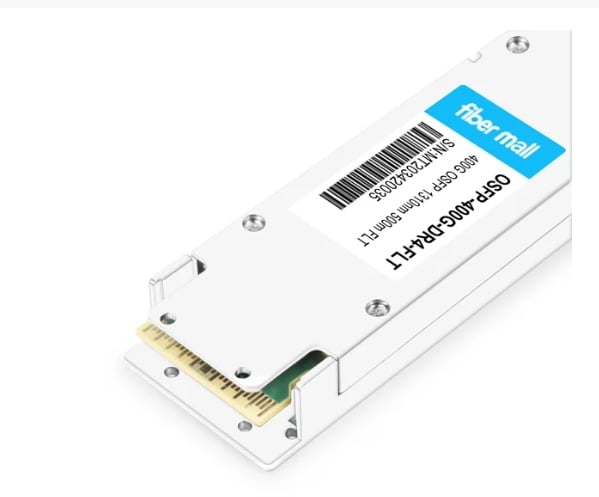
Where is 1310nm fiber commonly used?
1310nm fiber is used widely because it offers the right balance between performance and cost. This kind of fiber is so popular in long-haul telecommunication networks because its attenuation is low while maintaining signal integrity over long distances. Apart from that, 1310nm fiber can be located at metropolitan area networks (MANs), which supports high-capacity data transmission between local service providers and end-users. In addition to these uses, data centers also employ 1310nm fibers for short to mid-range connections due to their reliability and efficiency in transmitting large amounts of data at high speeds accurately, thus making them an essential part of any modern-day communication infrastructure designed around fast internet access capabilities such as PONs (passive optical networks), which are frequently deployed for broadband delivery to homes as well as businesses.
How is 1310nm fiber essential for data centers?
The importance of 1310nm fiber in data centers lies in its support for fast data transfer across short to medium distances without much signal degradation. It is good for interconnecting servers, storage systems, and switches within the data center because of its low levels of attenuation that guarantee the integrity of information. Another thing is that it reduces delays to ensure that there is maximum efficiency in performance as well as reliability while running the activities of a data center. Besides this, such a wavelength works well with different optical transceivers and technologies, thereby making them more usable and enhancing the flexibility and scalability needed by modern data center infrastructure.
What types of transceivers are compatible with 1310nm fiber?
1310nm fiber can work with various transceivers, especially in Ethernet, SONET/SDH, and Fibre Channel applications. SFP (Small Form-factor Pluggable), SFP+ (enhanced SFP), and QSFP+ (Quad Small Form-factor Pluggable) are some of the most common types of these devices in fiber optic communication. These transceivers support data rates from 1 Gbps to 10 Gbps or even higher, which is necessary for modern network infrastructures. Furthermore, LR (Long Reach) and ER (Extended Reach) are two examples of 1310nm transceivers that can be used for long distances up to several kilometers, thus ensuring reliable communication links in various networking environments.
Challenges and Solutions in Using 1310nm Fiber
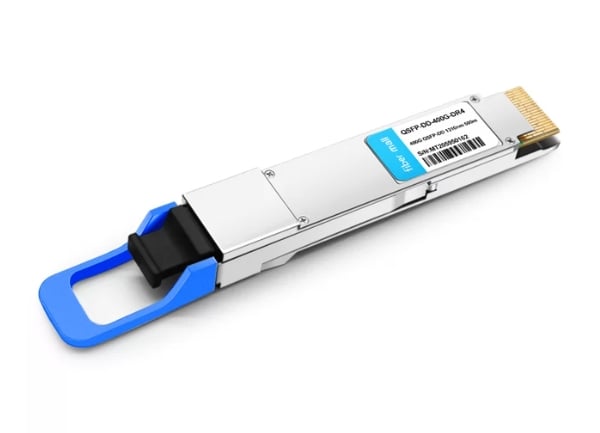
What are the common issues faced with 1310nm fiber?
One of the most widespread problems with 1310nm fiber is the attenuation of a signal over long distances. This type of fiber is designed for short and mid-range transmission; however, if data needs to be sent further than this distance, the signal may weaken and, therefore, interfere with information integrity and the quality of the transfer. Apart from that, another weakness lies in its susceptibility towards physical damage or bending losses, which may cause a significant increase in attenuation if mishandled. Furthermore, installation and maintenance processes for 1310 nm fibers necessitate specialized skills and equipment, resulting in high initial setup costs followed by higher operational expenses due to frequent checkups to ensure maximum performance achievement.
How can advancements in fiber optic technology mitigate these challenges?
Better materials and manufacturing have come about because of advancements in fiber optics technology. This has been done by reducing signal loss or attenuation over long distances. An example is Low Water Peak (LWP) fibers, which eliminate or reduce losses at the water peak wavelengths, increasing the range of 1310nm wavelengths, also known as PON networks. Another development is bend-insensitive fibers (BIF) that can be bent and still work without much signal loss. They are used with improved splicing methods that also cut down bending losses, thus making them more reliable across different wavelengths within a communication link. Additionally, greater error correction algorithms, together with advanced signal processing, help keep the data integrity right by compensating for any degradation in the quality of signals during transmission through optic fiber cables.
What future improvements can be expected for 1310nm fiber?
They want to make 1310nm fiber more efficient, reliable, and cost-effective. They are trying out new materials that will be even better at reducing signal attenuation and resisting things like temperature change and humidity, which can destroy the fiber in no time. Another area of interest is multiplexing technology, particularly dense wavelength division multiplexing (DWDM). This is believed to have the capacity to increase the bandwidth in these fibers, enabling more data transfer without degradation taking place simultaneously. Moreover, ongoing research on quantum dots could change everything about how we currently use light sources and detectors, thereby greatly improving performance levels achieved by 1310 nm systems. These various inventions are all aimed at ensuring that optical networks become stronger as well as scalable so that they can handle future demands for transmitting information effectively.
Reference Sources
Frequently Asked Questions (FAQs)
Q: What is 1310nm fiber, and why is it important in optical fiber communication?
A: The 1310nm fiber refers to an optical fiber that operates at the wavelength of 1310 nanometers (nm). This fiber is essential in optical fiber communication because it offers relatively low attenuation and is effective for high-speed data transmission over long distances, which is why this fiber is commonly used.
Q: How does 1310nm fiber differ from 850nm fiber?
A: The main difference between 1310nm and 850nm fibers lies in their wavelengths. Multimode systems typically use the former, which functions well for shorter distances, while the latter can be applied in singlemode systems where longer spans are required due to their lower attenuation rates.
Q: What are some advantages of using 1310nm fiber in optical communications?
A: Benefits associated with employing or adopting this type of optic wire include decreased signal loss caused by attenuations along its length, wider bandwidth, and longer wavelengths (which enable light rays to carry more information). Therefore, it becomes very useful when developing metropolitan networks for long-haul applications where distance coverage may be an issue.
Q: Can I use single mode and multimode applications with a 1310 nm Fiber Optic Cable?
A: Although predominantly known for their ability to work over greater distances efficiently than other types, multi-mode varieties do not have that much range, but depending on design considerations such as power budgeting, they might still find application even though they are most often used within short distances.
Q: How far can data travel effectively using a 1310 nm Fiber Optic Cable?
A: A good-quality cable should transmit signals without significant loss up to ten kilometers or more, so it’s worth keeping this aspect in mind when constructing such a system.
Q: What effect does attenuation have on the 1310nm fiber performance?
A: As the signal travels through the fiber, attenuation decreases optical power. However, lower attenuation in 1310nm fiber allows efficient data transfer over long distances.
Q: Why was single-mode fiber designed to operate at 1310 nm?
A: Singlemode fibers were meant to work with 1310 nm because they have a larger bandwidth and are less noise-resistant than other wavelengths. This helps in achieving high-speed data transmission over long distances.
Q: In what way does scattering affect the performance of a fiber operating at 1310 nm?
A: Signal loss and degradation are caused by scattering in fibers operating at 1310nm. However, when compared with shorter wavelengths such as 850nm, where much more serious problems occur due to this phenomenon–at these higher frequencies, there will be better error correction capabilities to continue transmitting data packets even if some bits get corrupted during transit.
Q: Can we use 1310nm fibers for cost-effective solutions for data transmission?
A: Yes, because it provides efficiency over long-distance coverage and is compatible with existing infrastructures within different fiber optic communication systems requiring affordable high-speed signals.
Q: What is the difference between the optical power and bandwidth of a 1310 nm fiber and one that has been rated for use up till1550 nm?
A: The two types offer similar levels of optical power and high bandwidths while still ensuring better clarity on longer links or connections. These often demand greater capacity characterized by faster speeds like those supported by Gigabit Ethernet-based networks, etcetera.
Related Products:
-
 SFP28-25G32-BX40 25GBASE SFP28 BIDI ER TX1310nm/RX1270nm 40km LC SMF DDM Optical Transceiver Module
$180.00
SFP28-25G32-BX40 25GBASE SFP28 BIDI ER TX1310nm/RX1270nm 40km LC SMF DDM Optical Transceiver Module
$180.00
-
 QSFP-DD-400G-DR4 400G QSFP-DD DR4 PAM4 1310nm 500m MTP/MPO SMF FEC Optical Transceiver Module
$400.00
QSFP-DD-400G-DR4 400G QSFP-DD DR4 PAM4 1310nm 500m MTP/MPO SMF FEC Optical Transceiver Module
$400.00
-
 QSFP-DD-800G-DR8 800G-DR8 QSFP-DD PAM4 1310nm 500m DOM MTP/MPO-16 SMF Optical Transceiver Module
$1300.00
QSFP-DD-800G-DR8 800G-DR8 QSFP-DD PAM4 1310nm 500m DOM MTP/MPO-16 SMF Optical Transceiver Module
$1300.00
-
 QSFP-DD-800G-FR8 QSFP-DD 8x100G FR PAM4 1310nm 2km DOM MPO-16 SMF Optical Transceiver Module
$1500.00
QSFP-DD-800G-FR8 QSFP-DD 8x100G FR PAM4 1310nm 2km DOM MPO-16 SMF Optical Transceiver Module
$1500.00
-
 QSFP28-100G-DR1 100G QSFP28 Single Lambda DR 1310nm 500m LC SMF with FEC DDM Optical Transceiver
$180.00
QSFP28-100G-DR1 100G QSFP28 Single Lambda DR 1310nm 500m LC SMF with FEC DDM Optical Transceiver
$180.00
-
 QSFP28-100G-ER4L 100G QSFP28 ER4 Lite 1310nm (LAN WDM) 40km with FEC,30km without FEC LC SMF DDM Transceiver Module
$800.00
QSFP28-100G-ER4L 100G QSFP28 ER4 Lite 1310nm (LAN WDM) 40km with FEC,30km without FEC LC SMF DDM Transceiver Module
$800.00
-
 QSFP28-100G-FR1 100G QSFP28 Single Lambda FR 1310nm 2km LC SMF with FEC DDM Optical Transceiver
$215.00
QSFP28-100G-FR1 100G QSFP28 Single Lambda FR 1310nm 2km LC SMF with FEC DDM Optical Transceiver
$215.00
-
 QSFP28-100G-LR1 100G QSFP28 Single Lambda LR 1310nm 10km LC SMF with FEC DDM Optical Transceiver
$265.00
QSFP28-100G-LR1 100G QSFP28 Single Lambda LR 1310nm 10km LC SMF with FEC DDM Optical Transceiver
$265.00
-
 QSFP28-100G-LR4 100G QSFP28 LR4 1310nm (LAN WDM) 10km LC SMF DDM Transceiver Module
$285.00
QSFP28-100G-LR4 100G QSFP28 LR4 1310nm (LAN WDM) 10km LC SMF DDM Transceiver Module
$285.00
-
 QSFP28-100G-PSM4 100G QSFP28 PSM4 1310nm 500m MTP/MPO SMF DDM Transceiver Module
$180.00
QSFP28-100G-PSM4 100G QSFP28 PSM4 1310nm 500m MTP/MPO SMF DDM Transceiver Module
$180.00
-
 NVIDIA MMS4X00-NS400 Compatible 400G OSFP DR4 Flat Top PAM4 1310nm MTP/MPO-12 500m SMF FEC Optical Transceiver Module
$700.00
NVIDIA MMS4X00-NS400 Compatible 400G OSFP DR4 Flat Top PAM4 1310nm MTP/MPO-12 500m SMF FEC Optical Transceiver Module
$700.00
-
 OSFP-800G-DR8D-FLT 800G-DR8 OSFP Flat Top PAM4 1310nm 500m DOM Dual MTP/MPO-12 SMF Optical Transceiver Module
$1199.00
OSFP-800G-DR8D-FLT 800G-DR8 OSFP Flat Top PAM4 1310nm 500m DOM Dual MTP/MPO-12 SMF Optical Transceiver Module
$1199.00
-
 LQSFP112-400G-DR4 400G LPO QSFP112 DR4 PAM4 1310nm 500m MTP/MPO-12 with KP4 FEC Optical Transceiver Module
$1200.00
LQSFP112-400G-DR4 400G LPO QSFP112 DR4 PAM4 1310nm 500m MTP/MPO-12 with KP4 FEC Optical Transceiver Module
$1200.00
-
 LOSFP-800G-2FR4L LPO OSFP 2x400G FR4 PAM4 1310nm 2km DOM Dual Duplex LC SMF Optical Transceiver Module
$3500.00
LOSFP-800G-2FR4L LPO OSFP 2x400G FR4 PAM4 1310nm 2km DOM Dual Duplex LC SMF Optical Transceiver Module
$3500.00
-
 OSFP-800G-2FR4L OSFP 2x400G FR4 PAM4 1310nm 2km DOM Dual Duplex LC SMF Optical Transceiver Module
$1200.00
OSFP-800G-2FR4L OSFP 2x400G FR4 PAM4 1310nm 2km DOM Dual Duplex LC SMF Optical Transceiver Module
$1200.00
-
 OSFP-800G-DR8D 800G-DR8 OSFP PAM4 1310nm 500m DOM Dual MTP/MPO-12 SMF Optical Transceiver Module
$850.00
OSFP-800G-DR8D 800G-DR8 OSFP PAM4 1310nm 500m DOM Dual MTP/MPO-12 SMF Optical Transceiver Module
$850.00

